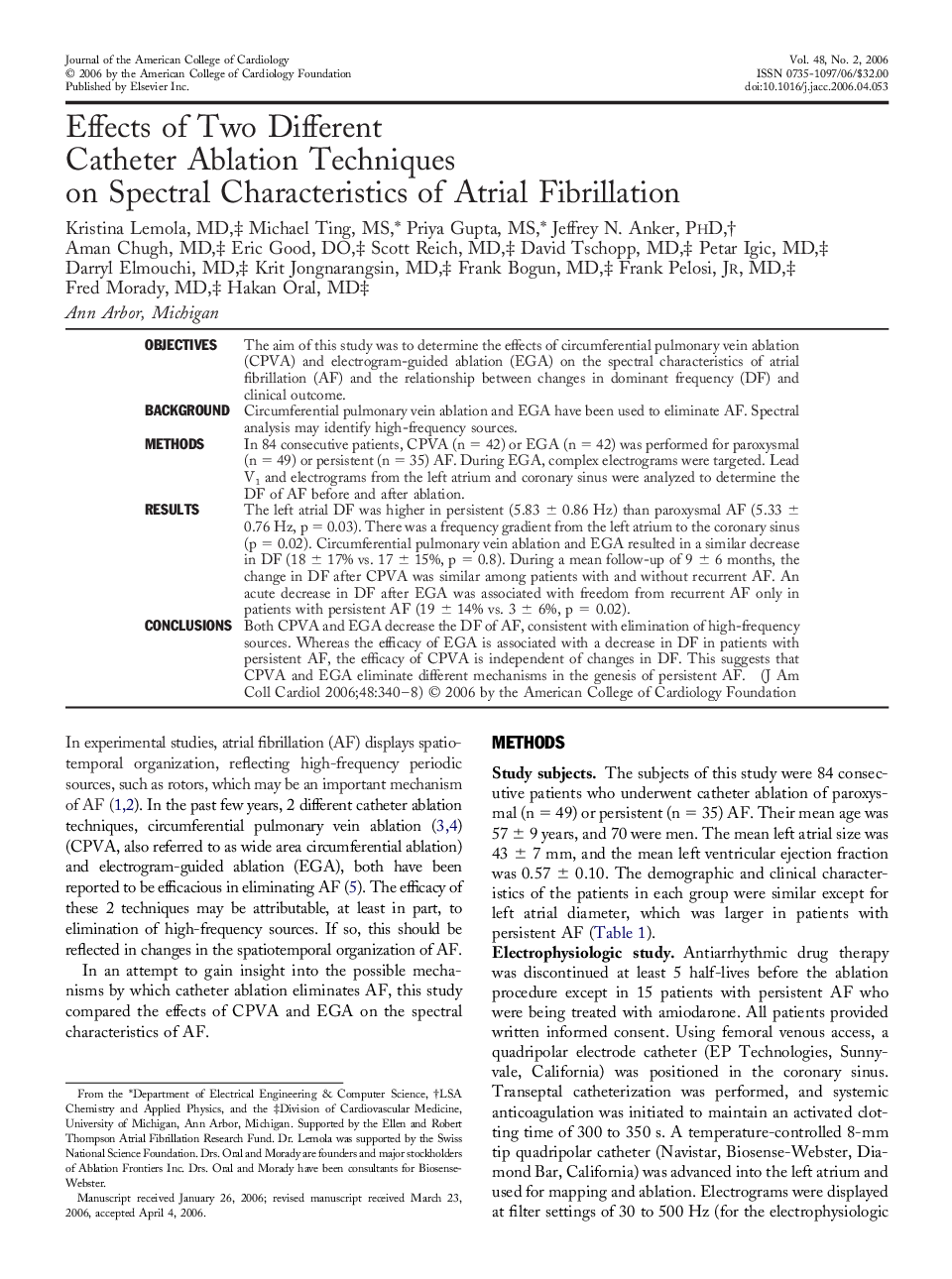| Article ID | Journal | Published Year | Pages | File Type |
|---|---|---|---|---|
| 2952044 | Journal of the American College of Cardiology | 2006 | 9 Pages |
ObjectivesThe aim of this study was to determine the effects of circumferential pulmonary vein ablation (CPVA) and electrogram-guided ablation (EGA) on the spectral characteristics of atrial fibrillation (AF) and the relationship between changes in dominant frequency (DF) and clinical outcome.BackgroundCircumferential pulmonary vein ablation and EGA have been used to eliminate AF. Spectral analysis may identify high-frequency sources.MethodsIn 84 consecutive patients, CPVA (n = 42) or EGA (n = 42) was performed for paroxysmal (n = 49) or persistent (n = 35) AF. During EGA, complex electrograms were targeted. Lead V1and electrograms from the left atrium and coronary sinus were analyzed to determine the DF of AF before and after ablation.ResultsThe left atrial DF was higher in persistent (5.83 ± 0.86 Hz) than paroxysmal AF (5.33 ± 0.76 Hz, p = 0.03). There was a frequency gradient from the left atrium to the coronary sinus (p = 0.02). Circumferential pulmonary vein ablation and EGA resulted in a similar decrease in DF (18 ± 17% vs. 17 ± 15%, p = 0.8). During a mean follow-up of 9 ± 6 months, the change in DF after CPVA was similar among patients with and without recurrent AF. An acute decrease in DF after EGA was associated with freedom from recurrent AF only in patients with persistent AF (19 ± 14% vs. 3 ± 6%, p = 0.02).ConclusionsBoth CPVA and EGA decrease the DF of AF, consistent with elimination of high-frequency sources. Whereas the efficacy of EGA is associated with a decrease in DF in patients with persistent AF, the efficacy of CPVA is independent of changes in DF. This suggests that CPVA and EGA eliminate different mechanisms in the genesis of persistent AF.
